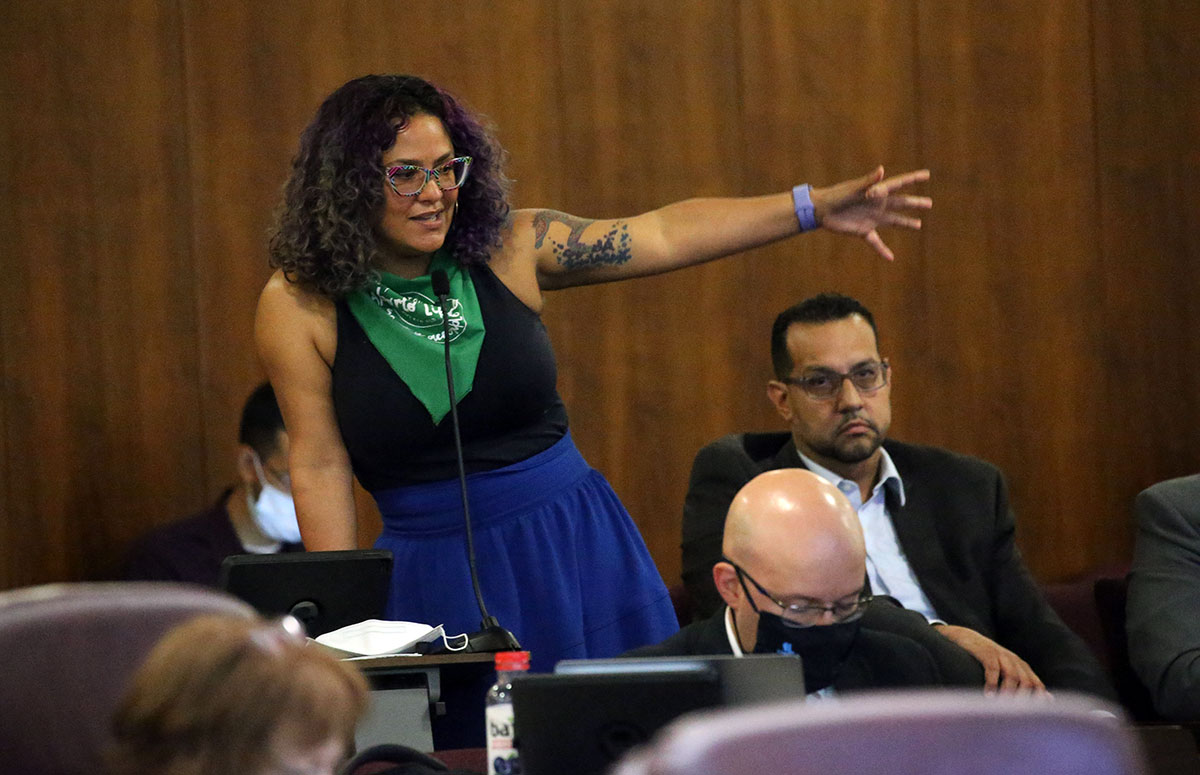The 33rd Ward, which is centered on Albany Park on the near northwest side, once defined machine politics in Chicago. Its longtime alderman, Richard Mell, maintained the loyalty of his constituents by doling out patronage jobs as bridge tenders. Politics was a family business for Mell. He elected son-in-law Rod Blagojevich to the legislature, then Congress, then the governorship. When Dick decided to retire, in the middle of his 10th term, he bestowed his City Council seat on his daughter, Deb.
In 2019, Deb Mell lost by 13 votes to Rossana Rodriguez-Sanchez, a democratic socialist who grew up in Puerto Rico. That was a transitional election for the 33rd Ward, which joined the vanguard of a movement defining politics in 21st Century Chicago as much as the machine defined it in the 20th: the progressive uprising that has given Chicago the largest democratic socialist caucus of any American city, and that put Brandon Johnson in the mayoral runoff, then the mayor’s office. It’s one of the seven most progressive wards in Chicago, all of them located on the near northwest or far north sides. They’re important to understand, because as they are going, so is going Chicago.
I identified the wards by looking at the results of three recent elections: the 2018 Democratic primary for governor between Daniel Biss and J.B. Pritzker, the 2020 Democratic primary for president between Bernie Sanders and Joe Biden, and the first round of the 2023 mayoral election. Seven wards voted for Biss, Sanders, and Johnson, reformist candidates running in opposition to the party establishment: the 1st, 26th, 33rd, 35th, 40th, 47th, and 49th. What they have in common are ethnic diversity, high education levels coupled with low income levels, and large numbers of residents who were born outside Chicago, and thus did not grow up with the city’s political institutions.
“Albany Park is a very diverse place,” says Rodriguez-Sanchez — 46 percent Latino, 34 percent white, 13 percent Asian, and 5 percent Black, making it one of a few Chicago neighborhoods with no ethnic majority. “There’s a culture that is created by the coexistence of people from different places and different realities.”
Donald Trump’s presidency also played a role in pushing these wards in a progressive direction. After the Trump administration conducted raids on sanctuary cities in 2019, “we decided to open up our political office for bike and foot brigades to identify vehicles used by [Immigration and Customs Enforcement],” Rodriguez-Sanchez says. “We had people handing out Know Your Rights cards. Trump definitely had an impact on how people are perceiving the conservatism of racist right-wing politics.”
During the COVID-19 pandemic, the ward office organized a mutual aid network: seamstresses sewed masks, while residents made wellness calls and brought groceries to vulnerable shut-ins. Those actions were not political, Rodriguez-Sanchez says, but they were progressive: “To me, the idea of progressive politics are policies that advance the needs of the majority.”
Here are the other six wards, and why they’re progressive.
1st Ward
Wicker Park and Logan Square are populated by Latinos and white hipsters who have college degrees but crappy jobs. On the education/income political axis, high/low is the most liberal point. Ald. Daniel LaSpata is a democratic socialist who has proposed canceling ComEd’s license with the city and establishing a publicly-owned utility.
26th Ward
Humboldt Park has become a haven for renters priced out of Wicker Park and Logan Square. The weekend before the Feb. 28 election, Johnson held an all-star progressive rally in the neighborhood. The ward’s newly elected alder, community organizer Jessie Fuentes, is the Council’s first LGBTQ+ Latina, and won the election as a foe of gentrification.
35th Ward
Ald. Carlos Ramirez-Rosa is the Council’s OG democratic socialist, elected to represent this Avondale ward in 2015. Ramirez-Rosa once explained to us why the Milwaukee Avenue corridor is the heartland of Chicago progressivism: “As gentrification has moved west, you have a situation arise where you have longtime working-class neighborhoods like Logan Square, Hermosa, Albany Park, see an influx of younger, primarily white progressives. That creates the mix necessary to elect someone like me. You have young white progressives and longtime Latino immigrant families agreeing very broadly on things like rent control, the need to raise the minimum wage, the need to support public sector unions, and the rights of workers generally.”
40th Ward
To win this Andersonville/Bowmanville ward in 2019, Ald. Andre Vasquez defeated another Machine holdover: nine-term incumbent Patrick O’Connor, who was Rahm Emanuel’s floor leader and one of the last-serving members of the Vrodlyak 29, along with Ed Burke. Vasquez was re-elected with 79 percent of the vote, a victory he attributes to providing ward services: “when people see what their government does, you see it moving in a more progressive manner.”
47th Ward
This Lincoln Square ward is wealthier than the others on this list (and voted for Sanders by only two points), but it loves good government. After the retirement of Gene Schulter, a product of Ed Kelly’s “Fightin’ 47th,” the ward elected Ameya Pawar, the Council’s first Asian-American, who promised to serve only two terms. Current Ald. Matt Martin wants to replace runoff elections with ranked-choice voting.
49th Ward
Rogers Park is another neighborhood with no ethnic majority, a large immigrant population and cheap rents. The Heartland Cafe has been demolished, but its radical spirit lives on. Ald. Maria Hadden, an LBGTQ+ African-American, is a member of the Council’s Progressive Reform Caucus.



